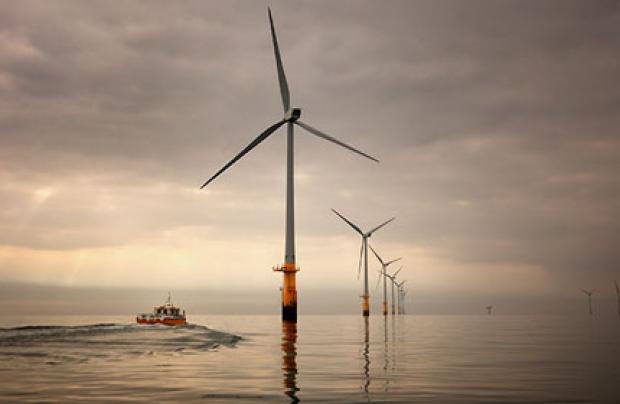Ever since the economy, and public sector investment, hit the buffers in late 2008, our call for government to invest heavily in new clean energy industries has become more important. What's needed is a Green New Deal - a strong green stimulus combined with an active industrial strategy - to create thousands of skilled jobs, secure energy supplies and secure Britain's place in the global clean energy race.
And it's an idea that's very popular with the electorate. A new poll by YouGov for Greenpeace shows a 65% of people demanding increased government investment in new clean energy industries. That figure rises to over 70% in the North East, where many of the jobs would be based.
But will we get it?
With serious cuts in public spending threatened after the election, and a continued credit crunch blocking private investment, where's the money needed to drive this renewable energy boom to come from?
Energy analysts estimate that to secure energy supplies and meet our carbon reduction commitments by 2020, something in the region of £300 billion needs to be invested in clean energy and energy efficiency projects over the next 10 years. Much will come from private investment, but a significant public contribution is also required to drive this. So how do the parties measure up?
Labour: In the budget Labour committed up to £1 billion for a new Green Infrastructure Bank and £60 million to develop land alongside ports to support wind turbine manufacturing facilities.
This encouraged energy giants GE and Siemens to announce an investment of nearly £200m in new UK manufacturing centres to build components for offshore wind turbines. It follows similar announcements earlier in the year by Clipper and Mitsubishi to set up factories and research facilities for offshore wind turbines and represents, at last, some momentum towards meeting Britain's commitment to generate 15% of our energy from renewable sources by 2020.
Conservatives: The Conservatives have pledged to roll existing low carbon budgets into a new Green Investment Bank, but they've not yet committed to any additional investment. David Cameron's comments last Friday to Jeremy Paxman that he wanted a smaller state, particularly in the North East, raise questions about what role he sees government in stimulating a low carbon economic recovery.
Liberal Democrats: Last week, the Liberal Democrats announced plans to create a one-year green job plan. They would use £3.1 bn of cuts in government expenditure to bring 200,000 empty properties back into use, and invest in new green energy infrastructure and public transport. As with Labour, this is also in addition to existing clean energy budgets.
Greens: The Green Party last week also launched a job-creation plan showing pledging a £44 billion investment package in renewables, transport, insulation, housing and waste management to create a million new jobs in the UK.
So, clear differences between the parties are emerging over investments and industrial strategy, but the most significant fact is that none of the parties are yet coming to the table with the scale of cash needed. With polls showing such strong support for more clean energy investment from government, parties would do well to raise their level of ambition before election day.



